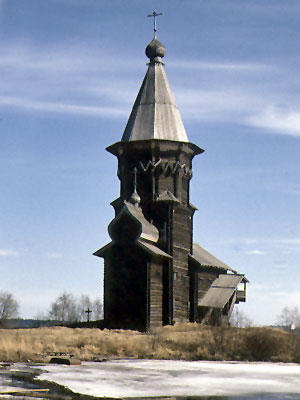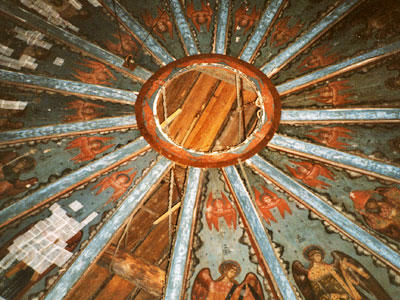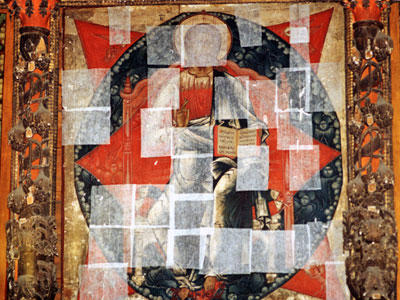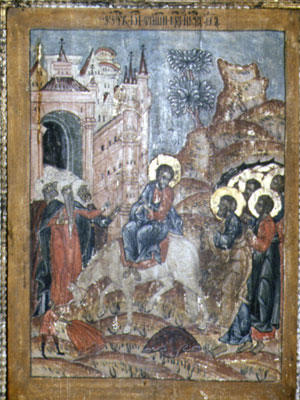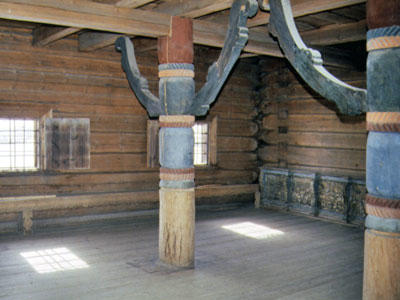Assumption Church
Constructed in 1774 on a rocky cape overlooking Lake Onega, Assumption Church is an elegant wooden structure with a distinctive nebo, or sky, a highly decorated painted ceiling made up of twenty panels surrounding the central tondo. The decorative framework was used for displaying painted icons and served as a symbolic representation of the heavens. The tall and slender church continually served the religious needs of the local community until it was abandoned following the Russian Revolution. It was opened as a museum in the mid-1940s. In 1992, the historic building was re-consecrated as an Orthodox parish church. Neglect, inadequate maintenance, developmental pressures, microorganism attacks, and rainwater have threatened the building. Since its construction, the church underwent only minor restorations, repairs, and maintenance. Prolonged and unchecked water infiltration slowly rotted the wooden structural framework. Although the small local congregation is dedicated to the preservation of the church, they lack the recourses for its preservation.
2002 World Monuments Watch
Since 1992, authorities and technical specialists have conducted regular inspections of the church, allowing for accurate and up-to-date conditions reports. However, due to the economic difficulties following the demise of the Soviet Union, there has been extremely limited funding for necessary conservation work. By 1998, the high tent roof was in urgent need of repair. The nebo had suffered considerable damages and exhibited notable paint loss. Assumption Church was listed on the 2002 World Monuments Watch. Following Watch listing, the Karelian Ministry of Culture supported emergency repairs to the roof and cupola of the historic building, including the restoration of the central tondo and one of the icon panels from the nebo. A 2002 grant from WMF supported the removal, conservation, and reinstallation of the 19 remaining panels. WMF also supported the documentation, cleaning, and repair of the nebo’s wooden framework. The restoration and reinstallation of the panels was completed in June 2007.
The elegant building is an exceptional example of seventeenth- and eighteenth-century wooden church architecture in Russia. The painted sky was a distinct feature of numerous wooden churches constructed throughout the northern provinces. However, most the decorative ceilings have been destroyed in revolution and war, lost, or sold to collectors. Although some surviving portions of the mounted icons have been moved to museums, Assumption church contains the only unaltered nebo, or sky, still in situ, supported by its original wooden framework, in all of Russia. The church has retained much of its original architectural fabric and is the most authentic example of this particular architectural typology. The building continues to function as an active church and is listed as a protected monument by the Republic of Karelia and the Russian Federation.

